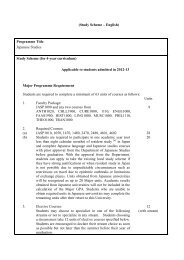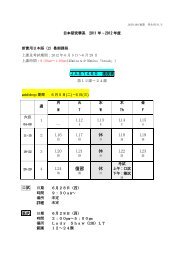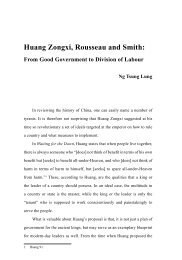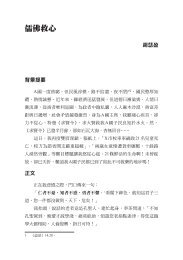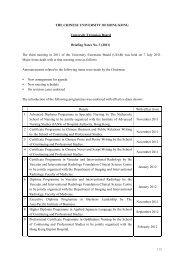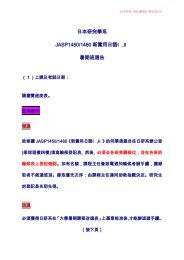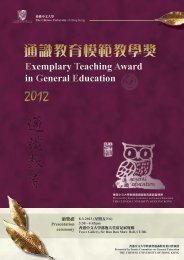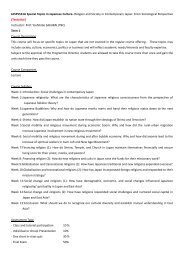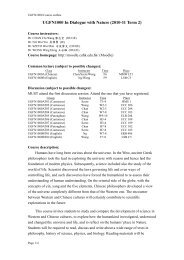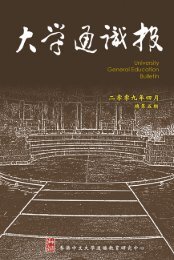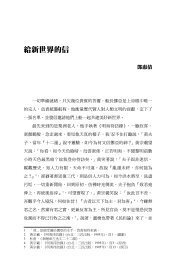ä¸è¼å ¨æ¸ - The Chinese University of Hong Kong
ä¸è¼å ¨æ¸ - The Chinese University of Hong Kong
ä¸è¼å ¨æ¸ - The Chinese University of Hong Kong
You also want an ePaper? Increase the reach of your titles
YUMPU automatically turns print PDFs into web optimized ePapers that Google loves.
Wyman Kwok, Education and Thinking 213<br />
other methods <strong>of</strong> cultivation. This method is both fundamental and crucial;<br />
however, merely conveying conceptions is very far from the establishment <strong>of</strong><br />
firm attitudes and habits.<br />
<strong>The</strong> second method may be called the “method <strong>of</strong> inducement.” By<br />
this I am referring to the following two components: (1) demonstrating the<br />
usefulness and importance <strong>of</strong> cognitive skills so as to induce a strong desire<br />
in students to acquire those skills; (2) explaining to students the necessity <strong>of</strong><br />
developing suitable dispositions for enhancing the mastering <strong>of</strong> the skills, in<br />
order to make them see that developing those dispositions is something they<br />
must do if they want to acquire and use the skills satisfactorily. For instance,<br />
suppose that an instructor has shown her students how she can readily use<br />
logical skills to analyze and solve problems that the students are interested<br />
in but originally seemed very difficult to them. <strong>The</strong> students might then feel<br />
a strong desire to acquire these skills. <strong>The</strong> instructor may then point out that,<br />
among other things, a prerequisite for truly mastering the relevant logical<br />
skills is to develop a disposition like “alertness to opportunities to use CT.”<br />
Only if a student is alert to the chance to practice the skills, and grasps this<br />
opportunity, can she hope to truly master them. <strong>The</strong> hope is that, driven by the<br />
desire to master the skills, students would gradually feel inclined to develop<br />
suitable dispositions. To be driven by desire is then the key element <strong>of</strong> this<br />
method. This method works best with students who have a strong desire to<br />
learn useful skills and are self-disciplined. 10<br />
<strong>The</strong> third method may be called the “method <strong>of</strong> sowing seeds.” By this<br />
I mean that the seeds <strong>of</strong> proper affective dispositions are sown into the field<br />
<strong>of</strong> a student’s mind by engaging the student in active thinking or discussions<br />
10 <strong>The</strong> skills <strong>of</strong> self-discipline are those discussed in section III. Please refer to that section for<br />
an explanation <strong>of</strong> their significance.



